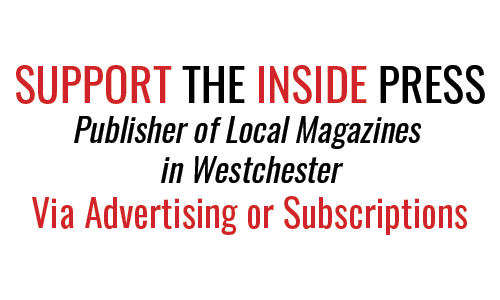by Ronni Diamondstein
 ‘Tis the season for colds and flu…and the relentless headache. We all know that prevention is the best medicine: wash your hands, cough into your elbow, get a flu shot, exercise, eat properly and get lots of rest. And we all know the OTC pain-reliever and plenty-of-fluids drill when prevention doesn’t quite do the job.
‘Tis the season for colds and flu…and the relentless headache. We all know that prevention is the best medicine: wash your hands, cough into your elbow, get a flu shot, exercise, eat properly and get lots of rest. And we all know the OTC pain-reliever and plenty-of-fluids drill when prevention doesn’t quite do the job.
Headaches frequently accompany upper respiratory infections. There are different headache kinds: migraine, tension and cluster. Millions of Americans suffer from these chronic, primary headaches. “Migraine and tension headaches are much more common than cluster headaches,” says Leslie Goldfein Saland, M.D., a neurologist at Mount Kisco Medical Group. Migraines begin as a dull ache and develop into throbbing pain. They can be preceded by an aura, often visual with flashing lights or wavy lines across one side of the visual field. “Not all migraines are severe,” says Dr. Saland, “but most severe and disabling headaches are due to migraines.” When they occur more than 15 times a month they are considered chronic.
“Tension headaches are less disabling than migraines,” says Dr. Saland. “They are usually described as pressure-like pain in the face, neck and scalp which waxes and wanes.” These headaches typically last four to six hours. Cluster headaches are intense headaches that come in “clusters” as the name implies. “Often these headaches occur at the same time of day, or every other day, for weeks, until the cluster ends,” says Dr. Saland.
There are a variety of ways to treat and manage these debilitating headaches including alternative as well as conventional medicine. “The best way to treat headaches is to prevent them in the first place, so when possible, triggers should be avoided and adequate sleep and a low stress lifestyle should be achieved,” advises Dr. Saland. She recommends keeping a headache diary, and notes there are several smartphone apps available to help with tracking and triggers. Triggers include a variety of foods, stress and environmental factors such as weather events like storms, sun glare and changes of season. Saland says the most frequent “food” she hears people describe as a trigger is alcohol. But she adds that too much caffeine and chocolate are also common. Other triggers are MSG, artificial sweeteners, certain cheeses, nitrates and nuts. Besides avoiding triggers, Saland adds that “stress relieving techniques, like biofeedback, yoga and massage can also help prevent headaches.”
“Unfortunately, in the real world this (trigger avoidance) is often not possible so we must be prepared with abortive and preventive medications,” continues Saland. Over-the-counter medications may be adequate, but sometimes prescription medications are necessary. “Migraine medications are most effective when taken as soon as possible after the onset of the headache. Keeping migraine medication nearby at all times can be important in the success of treatment.” Botox, as a treatment for migraine, has recently been approved by the FDA and, Saland notes, in concert with other medication, it can be quite effective.
Medications are not the only helpful headache treatment. Research studies at Duke University Medical Center have shown that acupuncture can be a most effective treatment of chronic headaches. “People who suffer from tension headaches can benefit tremendously from acupuncture, “says Gary Sapolin, L.Ac., a licensed acupuncturist at Satori Wellness Center in Katonah. “Tension headaches can be caused by tightening muscles and acupuncture is wonderful for relaxing tightening muscles.” Acupuncture involves penetrating the skin with thin, metallic needles at specific points and “works by retraining the body’s vascular and nervous system to respond to stressful stimulators.” Developed over 2,000 years ago, it remains one of the main medical treatments in traditional Chinese medicine to this day.
Sapolin further mentions that acupressure, another traditional Chinese therapy that is a form of massage, can also help people suffering from chronic headaches. Acupressure practitioners apply pressure to acupoints on the body’s meridians. Acupuncture and acupressure are often used together for maximum relief. “What we look to do is lessen the frequency and intensity of headaches,” says Sapolin. “Everyone benefits to some degree, it is just a question of the intensity.” Sapolin says that even people with basic stress can benefit from acupuncture. “It gets to the root of a lot of health problems. It’s a medical treatment, but it is also a spa treatment.”
Both traditional and nontraditional approaches can help chronic headache sufferers. It’s just a matter of finding what works for you.
Ronni Diamondstein, owner of Maggie Mae Pup Reporter™ is a Chappaqua based freelance writer, PR consultant, award-winning photographer and former School Library Media Specialist and teacher who has worked in the United States and abroad.
A Recipe to Ease
Winter Colds
In 1997, I read an article by Suzanne Hamlin in The New York Times with a remedy to ease winter cold and flu symptoms. This was well before Airborne® came on the scene. As a teacher, I was exposed to everything and Hot Ginger Lemonade seemed like something worth trying. For the following 15 years, I made this recipe daily and was able to ward off a bad cold. If I did get a little something, it never lasted very long. You need to like ginger and spicy things.
Hot Ginger Lemonade
Grate unpeeled ginger using the large holes of four-sided grater. Put two tables of the shards into a teapot. Pour in two cups of boiling water. Cover and let steep for five or ten minutes. Strain out the ginger, add a tablespoon of honey, two tablespoons of freshly squeezed lemon juice and a pinch of cayenne pepper. Stir and drink. Stay well!

sattar rind says
Well written and informative